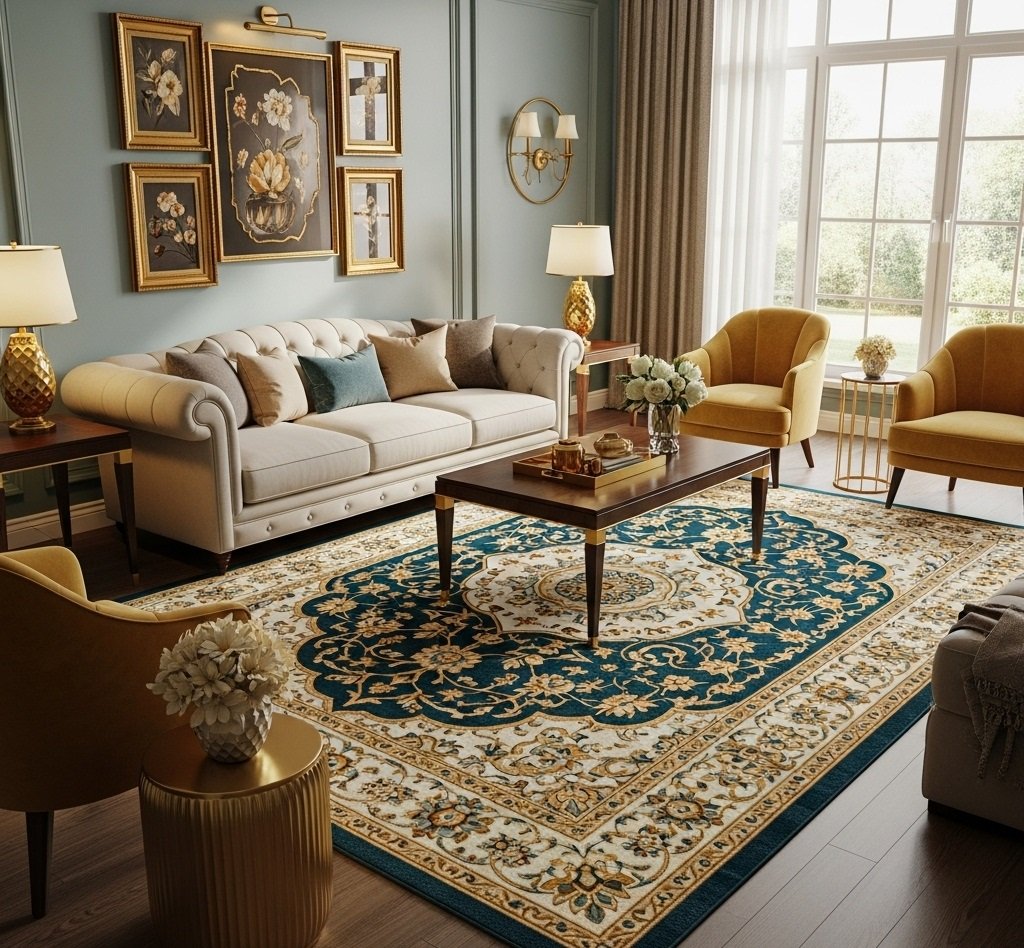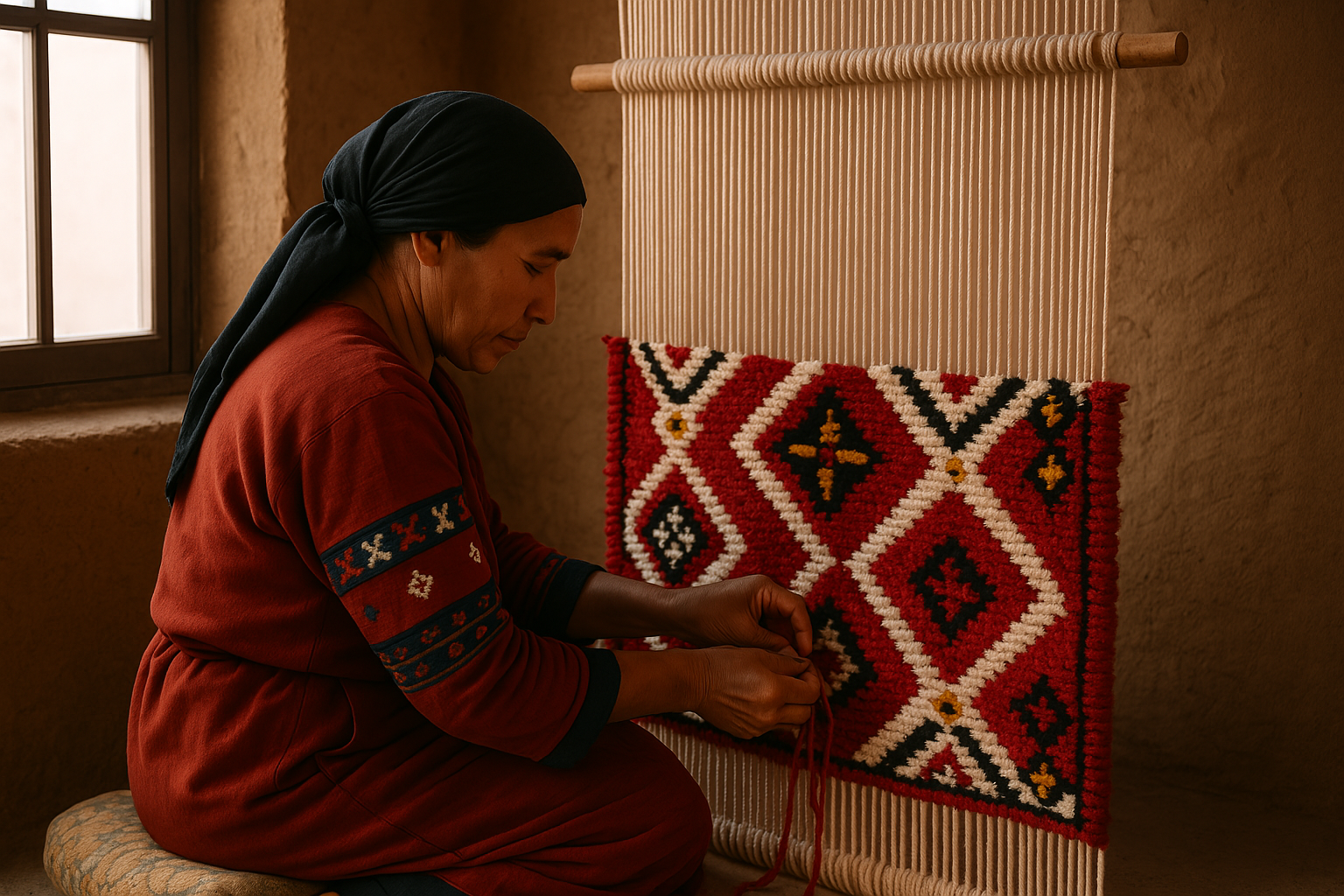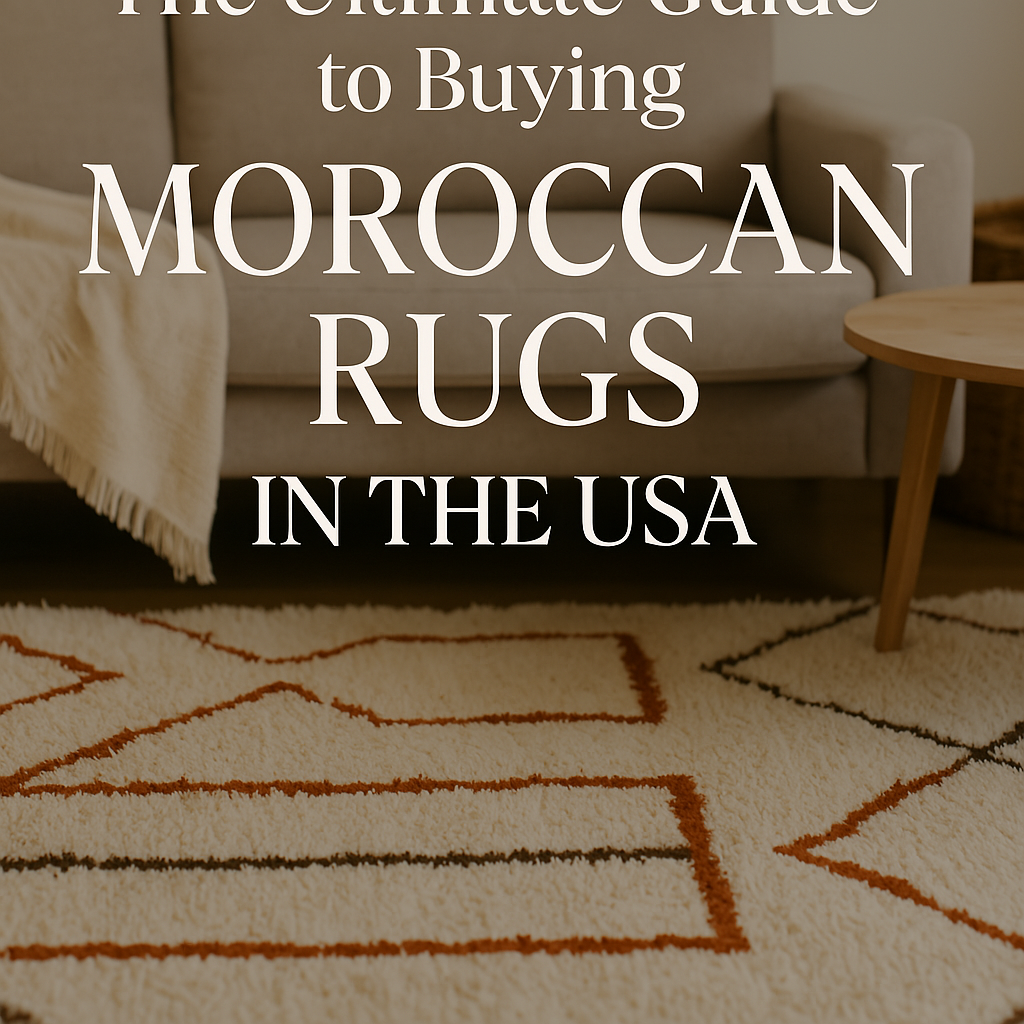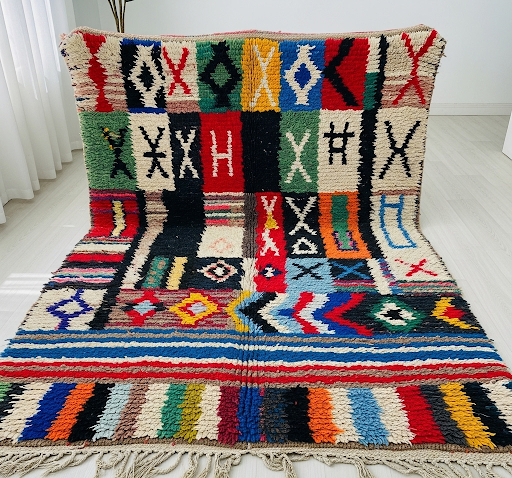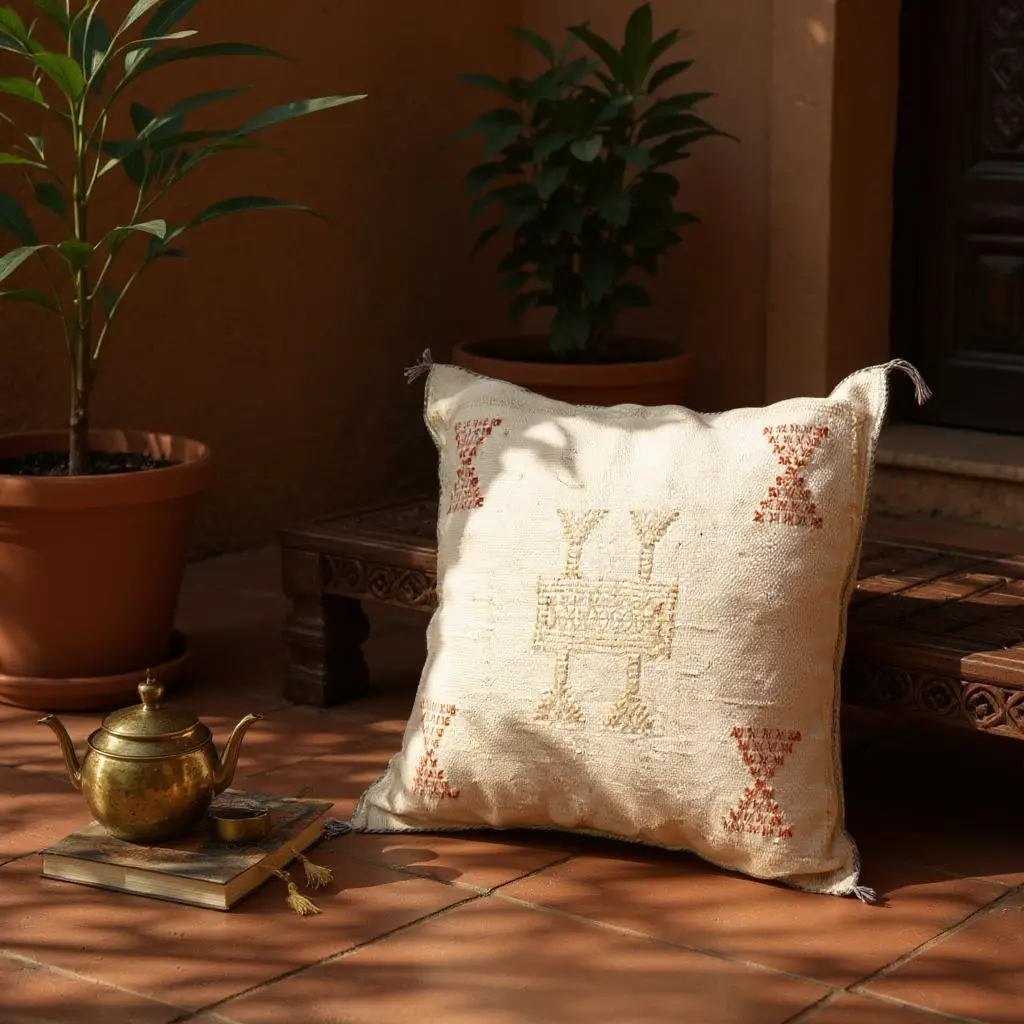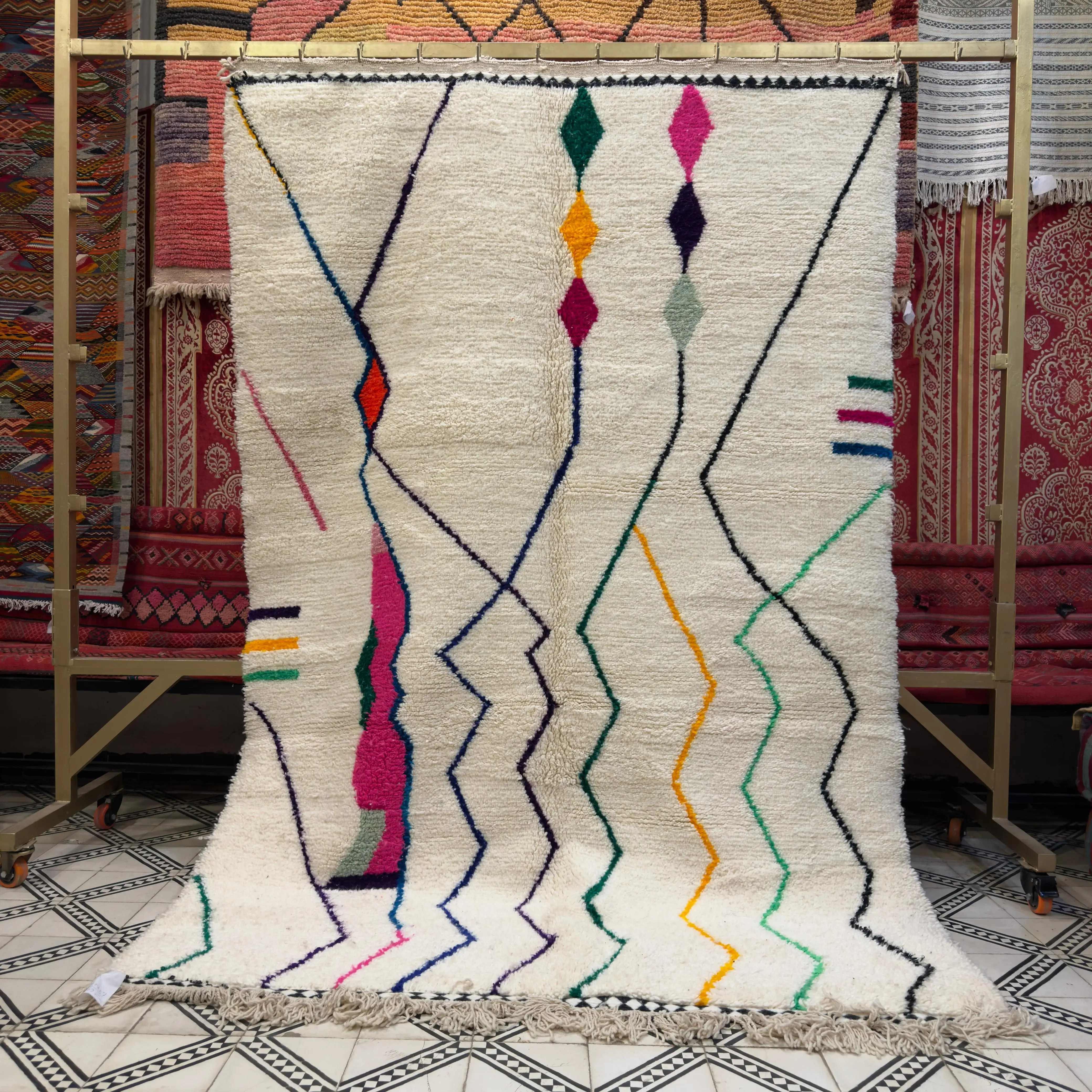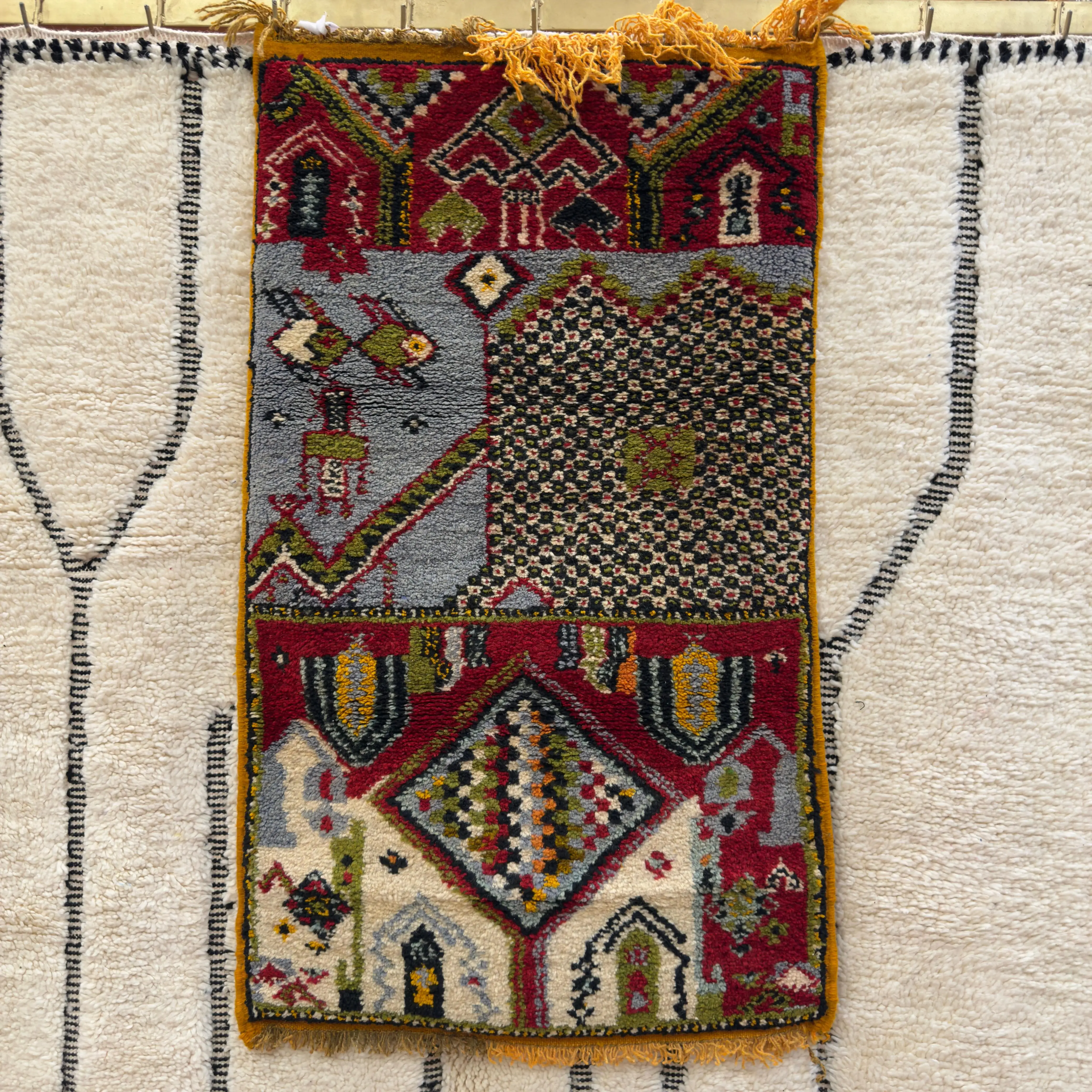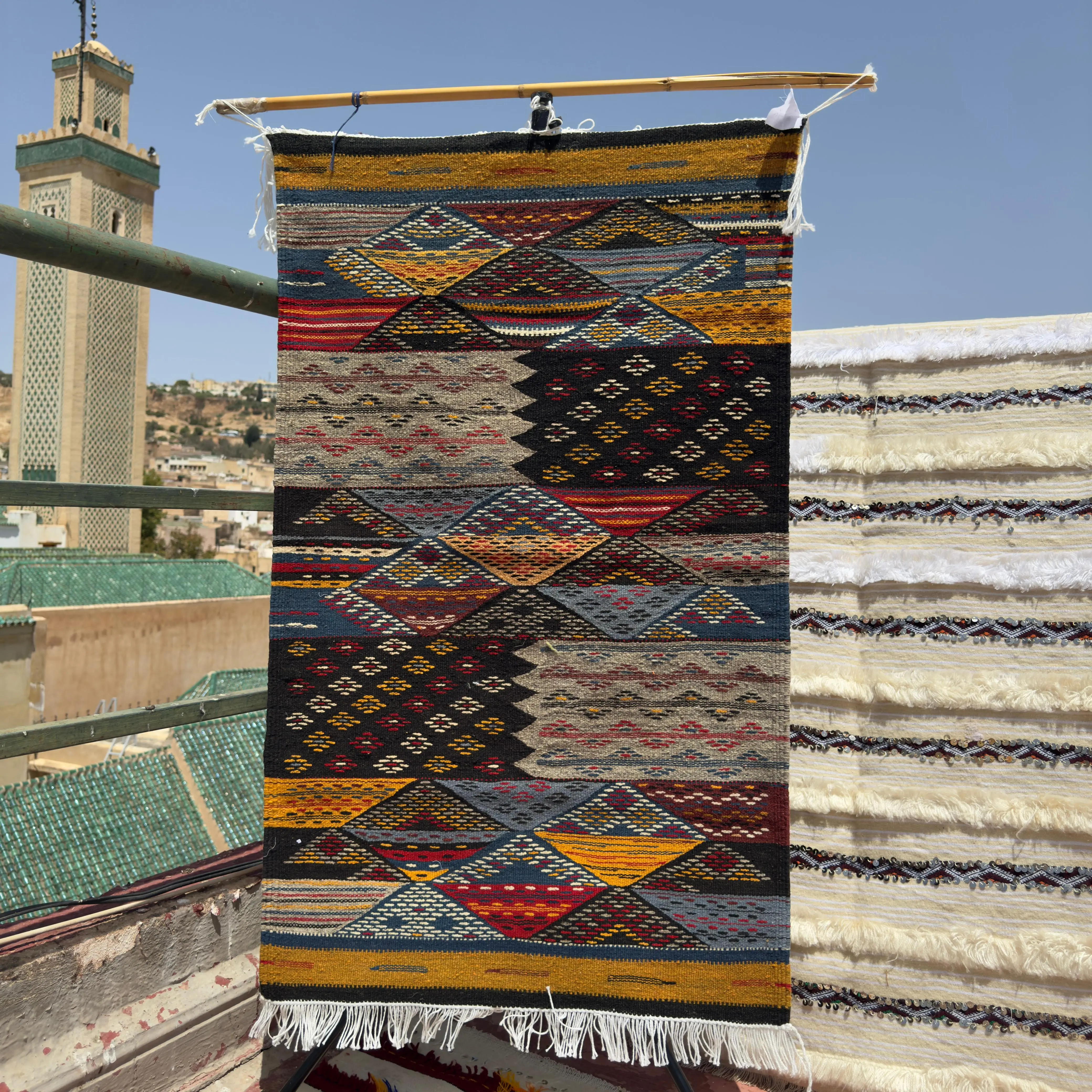An area rug is one of the most powerful pieces in a designer's toolkit. It’s the anchor that can tie a whole room together, defining the space, adding warmth, and infusing it with color and personality. But this power can also be intimidating. How do you choose a rug that complements your furniture, art, and paint colors without clashing or looking out of place?
Creating a cohesive, beautifully matched space isn't about following rigid rules; it's about understanding a few simple principles of harmony. This guide will break down the easy-to-follow strategies for choosing a rug that perfectly syncs with your decor, creating a home that feels intentional and effortlessly stylish.

The "Anchor Piece" Philosophy: Rug First or Decor First?
Before you start shopping, decide on your approach. There are two main philosophies for building a cohesive room around a rug.
-
Rug First: This is often the easiest approach, especially if you're starting from scratch. You begin by falling in love with a statement rug—a piece with a bold pattern or rich colors. This rug then becomes your "anchor piece." From there, you pull colors from the rug to inform your choices for throw pillows, curtains, wall art, and other accessories. It’s a nearly foolproof way to create a coordinated color palette.
-
Decor First: If you already have furniture and art that you love, your rug will play a supporting role. Your goal is to find a rug that complements your existing pieces. Look at your sofa, chairs, and artwork. Identify the dominant colors and undertones, and look for a rug that shares or complements that color family.
Mastering Color Harmony
You don't need to be a color theorist to create a beautiful palette. Just keep these simple concepts in mind.
-
The 60-30-10 Rule: This is a classic interior design guideline. Your room's color scheme should be roughly 60% a dominant color (like your walls), 30% a secondary color (often your furniture and rug), and 10% an accent color (throw pillows, decor objects). A rug is a great way to introduce that secondary color.
-
Borrow from Your Surroundings: Look at the colors already in your room. A simple trick is to choose a rug that features at least two of your accent colors. This will instantly make the rug feel like it belongs.
-
The Power of Neutrals: If your room is already full of color and pattern, a neutral rug (think beige, cream, or gray) can be the calming, grounding element that ties everything together. Large area rugs in a neutral tone can make a space feel bigger and more serene.
-
Embrace Complementary Tones: For a more dynamic look, consider a rug in a color that complements your existing decor. For example, in a room with warm wood furniture and terracotta accents, a green area rug can provide a beautiful, calming contrast that feels both sophisticated and connected to nature.
Pattern Play: The Art of Mixing
Mixing patterns can feel daunting, but it adds incredible depth and personality to a room. The key is to create harmony, not chaos.
-
Vary the Scale: This is the most important rule. If your sofa has a large-scale floral pattern, choose a rug with a smaller, more subtle geometric design. If your rug has a bold, dominant pattern, keep the patterns on your furniture and pillows more understated. Two large, bold patterns will fight for attention.
-
Stick to a Color Family: When mixing different patterns, ensure they share a common color palette. A floral pillow, a striped chair, and a geometric rug can all work beautifully together if they all share shades of blue and cream, for example.
Size and Style Matter
Finally, cohesion is about more than just color and pattern.
-
Size Defines the Space: The size of your rug has a huge impact. In a living room, large area rugs are essential for creating a unified look. The rug should be big enough so that at least the front legs of your sofa and chairs are on it. This visually connects all the pieces and makes the space feel grounded and intentional.
-
Match the Vibe: Ensure the style of the rug matches the overall aesthetic of your room. A sleek, modern geometric rug will feel out of place in a rustic farmhouse setting, just as a traditional Persian rug might clash with minimalist decor.
Conclusion: Your Home in Harmony
Choosing a rug is your opportunity to tie all the elements of your room into a single, cohesive story. By thinking about color, pattern, and scale, you can select a piece that doesn't just match your decor, but elevates it. Whether you start with a statement green area rug or find a neutral piece to ground your existing furniture, following these simple principles will help you create a beautiful, harmonious home.
Un tapis est l'une des pièces les plus puissantes de la boîte à outils d'un designer. C'est l'ancre qui peut lier toute une pièce, en définissant l'espace, en ajoutant de la chaleur et en l'infusant de couleur et de personnalité. Mais ce pouvoir peut aussi être intimidant. Comment choisir un tapis qui complète vos meubles, vos œuvres d'art et vos couleurs de peinture sans jurer ou paraître déplacé ?
Créer un espace cohérent et magnifiquement assorti ne consiste pas à suivre des règles rigides ; il s'agit de comprendre quelques principes simples d'harmonie. Ce guide présentera les stratégies faciles à suivre pour choisir un tapis qui se synchronise parfaitement avec votre décor, créant une maison qui semble intentionnelle et élégante sans effort.

La philosophie de la « pièce d'ancrage » : Tapis d'abord ou décor d'abord ?
Avant de commencer à magasiner, décidez de votre approche. Il existe deux philosophies principales pour construire une pièce cohérente autour d'un tapis.
-
Le tapis d'abord : C'est souvent l'approche la plus simple, surtout si vous partez de zéro. Vous commencez par tomber amoureux d'un tapis remarquable — une pièce avec un motif audacieux ou des couleurs riches. Ce tapis devient alors votre « pièce d'ancrage ». À partir de là, vous tirez les couleurs du tapis pour inspirer vos choix de coussins, de rideaux, d'art mural et d'autres accessoires. C'est un moyen presque infaillible de créer une palette de couleurs coordonnée.
-
Le décor d'abord : Si vous avez déjà des meubles et des œuvres d'art que vous aimez, votre tapis jouera un rôle de soutien. Votre objectif est de trouver un tapis qui complète vos pièces existantes. Regardez votre canapé, vos chaises et vos œuvres d'art. Identifiez les couleurs dominantes et les nuances, и cherchez un tapis qui partage ou complète cette famille de couleurs.
Maîtriser l'harmonie des couleurs
Vous n'avez pas besoin d'être un théoricien des couleurs pour créer une belle palette. Gardez simplement ces concepts simples à l'esprit.
-
La règle des 60-30-10 : C'est une directive classique en design d'intérieur. La palette de couleurs de votre pièce devrait être composée d'environ 60 % d'une couleur dominante (comme vos murs), 30 % d'une couleur secondaire (souvent vos meubles et votre tapis), et 10 % d'une couleur d'accentuation (coussins, objets de décoration). Un tapis est un excellent moyen d'introduire cette couleur secondaire.
-
Empruntez à votre environnement : Regardez les couleurs déjà présentes dans votre pièce. Une astuce simple consiste à choisir un tapis qui comporte au moins deux de vos couleurs d'accentuation. Cela donnera instantanément l'impression que le tapis a sa place.
-
Le pouvoir des neutres : Si votre pièce est déjà pleine de couleurs et de motifs, un tapis neutre (pensez au beige, à la crème ou au gris) peut être l'élément apaisant et unificateur qui lie le tout. Les grands tapis dans un ton neutre peuvent faire paraître un espace plus grand et plus serein.
-
Adoptez les tons complémentaires : Pour un look plus dynamique, envisagez un tapis d'une couleur qui complète votre décor existant. Par exemple, dans une pièce avec des meubles en bois chaud et des accents de terre cuite, un tapis vert peut offrir un contraste magnifique et apaisant qui semble à la fois sophistiqué et connecté à la nature.
Le jeu des motifs : L'art de mélanger
Mélanger les motifs peut sembler intimidant, mais cela ajoute une profondeur et une personnalité incroyables à une pièce. La clé est de créer l'harmonie, pas le chaos.
-
Variez l'échelle : C'est la règle la plus importante. Si votre canapé a un grand motif floral, choisissez un tapis avec un motif géométrique plus petit et plus subtil. Si votre tapis a un motif audacieux et dominant, gardez les motifs de vos meubles et coussins plus discrets. Deux grands motifs audacieux se battront pour attirer l'attention.
-
Restez dans une même famille de couleurs : Lorsque vous mélangez différents motifs, assurez-vous qu'ils partagent une palette de couleurs commune. Un coussin floral, une chaise à rayures et un tapis géométrique peuvent tous s'harmoniser à merveille s'ils partagent tous des nuances de bleu et de crème, par exemple.
La taille et le style comptent
Enfin, la cohésion ne se résume pas à la couleur et au motif.
-
La taille définit l'espace : La taille de votre tapis a un impact énorme. Dans un salon, les grands tapis sont essentiels pour créer un look unifié. Le tapis doit être assez grand pour qu'au moins les pieds avant de votre canapé et de vos chaises reposent dessus. Cela relie visuellement toutes les pièces et donne à l'espace une impression d'ancrage et d'intentionnalité.
-
Assortissez l'ambiance : Assurez-vous que le style du tapis correspond à l'esthétique générale de votre pièce. Un tapis géométrique moderne et épuré semblera déplacé dans un décor de ferme rustique, tout comme un tapis persan traditionnel pourrait jurer avec un décor minimaliste.
Conclusion : Votre maison en harmonie
Choisir un tapis est votre occasion de lier tous les éléments de votre pièce en une seule histoire cohérente. En pensant à la couleur, au motif et à l'échelle, vous pouvez choisir une pièce qui non seulement correspond à votre décor, mais l'élève. Que vous commenciez avec un tapis vert remarquable ou que vous trouviez une pièce neutre pour ancrer vos meubles existants, suivre ces principes simples vous aidera à créer une maison belle et harmonieuse.
Una alfombra es una de las piezas más poderosas en la caja de herramientas de un diseñador. Es el ancla que puede unir toda una habitación, definiendo el espacio, añadiendo calidez e infundiéndole color y personalidad. Pero este poder también puede ser intimidante. ¿Cómo elegir una alfombra que complemente tus muebles, obras de arte y colores de pintura sin desentonar o parecer fuera de lugar?
Crear un espacio cohesivo y bellamente combinado no consiste en seguir reglas rígidas; se trata de comprender algunos principios simples de armonía. Esta guía presentará las estrategias fáciles de seguir para elegir una alfombra que se sincronice perfectamente con tu decoración, creando un hogar que se sienta intencional y elegante sin esfuerzo.

La filosofía de la «pieza de anclaje»: ¿Alfombra primero o decoración primero?
Antes de empezar a comprar, decide tu enfoque. Hay dos filosofías principales para construir una habitación cohesiva alrededor de una alfombra.
-
La alfombra primero: Este suele ser el enfoque más sencillo, especialmente si empiezas de cero. Comienzas por enamorarte de una alfombra llamativa, una pieza con un patrón audaz o colores ricos. Esta alfombra se convierte entonces en tu «pieza de anclaje». A partir de ahí, extraes los colores de la alfombra para inspirar tus elecciones de cojines, cortinas, arte de pared y otros accesorios. Es una forma casi infalible de crear una paleta de colores coordinada.
-
La decoración primero: Si ya tienes muebles y obras de arte que te encantan, tu alfombra jugará un papel de apoyo. Tu objetivo es encontrar una alfombra que complemente tus piezas existentes. Mira tu sofá, sillas y obras de arte. Identifica los colores dominantes y los matices, y busca una alfombra que comparta o complemente esa familia de colores.
Dominar la armonía del color
No necesitas ser un teórico del color para crear una paleta hermosa. Simplemente ten en cuenta estos conceptos simples.
-
La regla 60-30-10: Esta es una directriz clásica del diseño de interiores. La paleta de colores de tu habitación debe componerse de aproximadamente un 60% de un color dominante (como tus paredes), un 30% de un color secundario (a menudo tus muebles y tu alfombra), y un 10% de un color de acento (cojines, objetos de decoración). Una alfombra es una excelente manera de introducir ese color secundario.
-
Toma prestado de tu entorno: Mira los colores que ya están presentes en tu habitación. Un truco simple es elegir una alfombra que contenga al menos dos de tus colores de acento. Esto hará que la alfombra se sienta instantáneamente como si perteneciera al lugar.
-
El poder de los neutros: Si tu habitación ya está llena de color y patrones, una alfombra neutra (piensa en beige, crema o gris) puede ser el elemento calmante y unificador que une todo. Las grandes alfombras en un tono neutro pueden hacer que un espacio parezca más grande y sereno.
-
Adopta los tonos complementarios: Para un aspecto más dinámico, considera una alfombra de un color que complemente tu decoración existente. Por ejemplo, en una habitación con muebles de madera cálida y acentos de terracota, una alfombra verde puede ofrecer un contraste hermoso y relajante que se siente a la vez sofisticado y conectado con la naturaleza.
El juego de los patrones: El arte de mezclar
Mezclar patrones puede parecer intimidante, pero añade una profundidad y personalidad increíbles a una habitación. La clave es crear armonía, no caos.
-
Varía la escala: Esta es la regla más importante. Si tu sofá tiene un patrón floral a gran escala, elige una alfombra con un diseño geométrico más pequeño y sutil. Si tu alfombra tiene un patrón audaz y dominante, mantén los patrones de tus muebles y cojines más discretos. Dos patrones grandes y audaces competirán por la atención.
-
Mantente en una misma familia de colores: Al mezclar diferentes patrones, asegúrate de que compartan una paleta de colores común. Un cojín floral, una silla a rayas y una alfombra geométrica pueden armonizar maravillosamente si todos comparten tonos de azul y crema, por ejemplo.
El tamaño y el estilo importan
Finalmente, la cohesión es más que solo color y patrón.
-
El tamaño define el espacio: El tamaño de tu alfombra tiene un impacto enorme. En una sala de estar, las grandes alfombras son esenciales para crear un aspecto unificado. La alfombra debe ser lo suficientemente grande como para que al menos las patas delanteras de tu sofá y sillas descansen sobre ella. Esto conecta visualmente todas las piezas y le da al espacio una sensación de anclaje e intencionalidad.
-
Combina el ambiente: Asegúrate de que el estilo de la alfombra coincida con la estética general de tu habitación. Una alfombra geométrica moderna y elegante se sentirá fuera de lugar en un ambiente de granja rústica, así como una alfombra persa tradicional podría chocar con una decoración minimalista.
Conclusión: Tu hogar en armonía
Elegir una alfombra es tu oportunidad de unir todos los elementos de tu habitación en una sola historia coherente. Al pensar en el color, el patrón y la escala, puedes seleccionar una pieza que no solo combine con tu decoración, sino que la eleve. Ya sea que comiences con una llamativa alfombra verde o encuentres una pieza neutra para anclar tus muebles existentes, seguir estos simples principios te ayudará a crear un hogar hermoso y armonioso.

